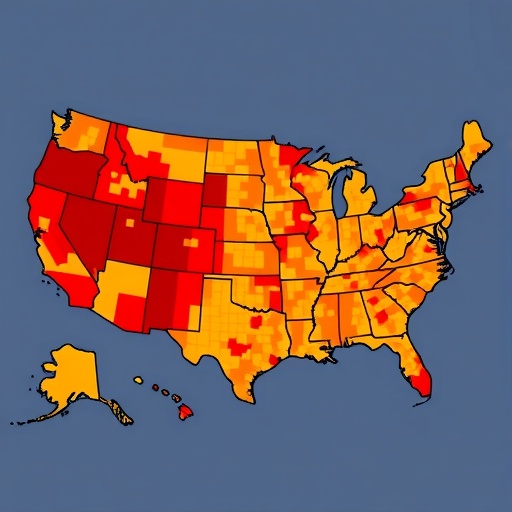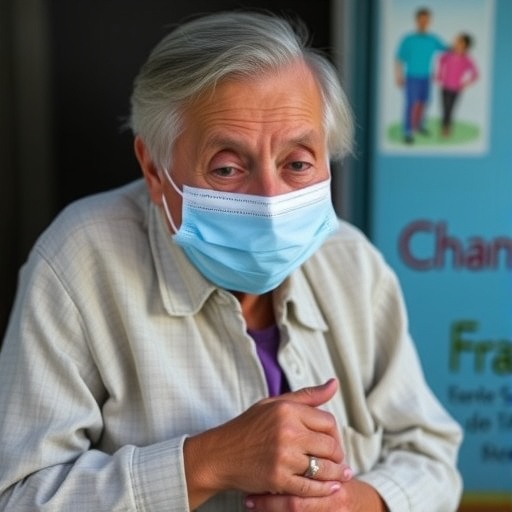One of the pivotal revelations of the study is the identification of key risk factors that exacerbate the spread of H5N1 within herds. Population density emerged as a critical determinant, with tightly packed housing increasing contact rates and facilitating rapid viral dissemination. Moreover, the model spotlights the role of calf housing areas as potential “hotspots” due to younger animals’ heightened susceptibility and immune naivety. Importantly, the model predicts that without timely intervention, outbreaks could quickly escalate, leading to substantial morbidity and jeopardizing milk production.
The researchers employed a rigorous sensitivity analysis to dissect which parameters hold the greatest sway over transmission dynamics. Contact rate coefficients, environmental viral decay constants, and latency periods were among the most influential, revealing critical leverage points for disease control. For instance, accelerating the removal of infectious animals from the population and optimizing cleaning protocols for shared equipment could significantly curb virus spread — insights that are both actionable and economically feasible for farmers and veterinarians alike.
To simulate intervention efficacy, the team integrated vaccination strategies into their model, exploring scenarios ranging from partial to full herd immunization. The outcomes suggest that even moderate vaccination coverage could drastically reduce outbreak size, delay peak infection times, and enhance herd immunity thresholds. These simulations underscore the potential benefits of adopting preemptive vaccination programs tailored to specific farm structures and seasonal risk windows, providing a datapoint for policymakers contemplating regulatory measures.
Beyond internal herd dynamics, the model extends to appraise inter-farm transmission risks, factoring in cattle movement patterns, such as transport to markets and shared grazing lands. This broader network perspective reveals that controlling disease at the individual farm level is insufficient if regional transmission corridors remain open. As such, the study advocates for coordinated surveillance and movement restrictions during outbreak periods, drawing parallels with successful containment protocols used in other livestock diseases.
Technically, the mathematical framework hinges on a system of coupled ordinary differential equations (ODEs) that describe the temporal evolution of each compartment. The researchers supplemented these with stochastic elements to capture random fluctuations, which are especially pertinent during early outbreak phases when case numbers are low. This hybrid deterministic-stochastic paradigm affords robustness against uncertainties inherent in biological systems, which often defy purely deterministic forecasting.
A notable strength of this model lies in its extensibility. The modular architecture enables rapid incorporation of new viral strains, variable host susceptibilities, or alternative management practices, making it a valuable platform for ongoing surveillance in a landscape where influenza viruses continually mutate. The authors envision adapting the framework to other susceptible livestock species, potentially creating an integrated tool for multi-host influenza ecology.
The implications of this research reverberate beyond the realm of agricultural biosecurity. Considering the zoonotic potential of H5N1, insights from dairy cattle transmission models could inform human health risk assessments, particularly for farm workers and communities situated near intensive livestock operations. The modeling approach also contributes to the global understanding of influenza virus ecology, feeding into One Health initiatives that strive to bridge veterinary and human medical sciences.
This study’s methodological rigor was balanced by transparency regarding limitations. The authors acknowledge the paucity of longitudinal data on H5N1 prevalence in US cattle, which necessitated certain assumptions and parameter estimations. Future studies will benefit from targeted surveillance to validate and refine model parameters, facilitating dynamic updating as new data emerge. Furthermore, the model currently excludes viral evolution dynamics, an aspect critical in influenza research, earmarked for next-generation iterations.
One of the most captivating facets of the work is its emphasis on real-world applicability. By partnering with dairy industry stakeholders during model development, the researchers ensured that their findings have immediate translational potential. Recommendations such as modifying pen designs to reduce animal density or adjusting ventilation systems to mitigate airborne spread could be implemented swiftly at the farm level with demonstrable impacts on disease control.
The article also stimulates discussion around the economic trade-offs inherent in disease mitigation. While vaccination and enhanced biosecurity measures incur upfront costs, the model’s projections of outbreak severity and duration enable quantitative cost-benefit analyses, enabling producers to make informed decisions. This aligns with the increasing trend toward data-driven farm management where epidemiological models serve as decision support tools.
Looking ahead, the interdisciplinary outlook of this research heralds a new chapter in infectious disease modeling. By marrying mathematical sophistication with biological realism and practical farming insights, the study exemplifies how computational epidemiology can transcend theoretical abstraction to become an indispensable asset in safeguarding food production systems. The prospect of expanding such models to incorporate climate change effects or socio-economic variables further enriches their potential.
In sum, the work by Rawson and colleagues represents a landmark contribution to our understanding of H5N1 influenza in dairy cattle, elevating the discourse on livestock disease transmission through state-of-the-art mathematical modeling. Its comprehensive approach, spanning molecular biology to farm management, offers a beacon of guidance for researchers, agriculturalists, and policymakers confronting the multifaceted challenges posed by zoonotic pathogens in a globally interconnected world.
Subject of Research: Mathematical modeling of H5N1 influenza transmission in US dairy cattle
Article Title: A mathematical model of H5N1 influenza transmission in US dairy cattle
Article References:
Rawson, T., Morgenstern, C., Knock, E.S. et al. A mathematical model of H5N1 influenza transmission in US dairy cattle. Nat Commun 16, 4308 (2025). https://doi.org/10.1038/s41467-025-59554-z
Image Credits: AI Generated
Tags: compartmentalized disease modeling in livestockcomputational virology and epidemiologydairy cattle population healthH5N1 avian influenza in cattleimpact of zoonotic diseases on food supplyinfection risks in dairy farminglivestock disease management practicesmathematical modeling of disease spreadoutbreak prediction and mitigation strategiespublic health implications of H5N1transmission dynamics of influenza viruszoonotic disease transmission in agriculture





